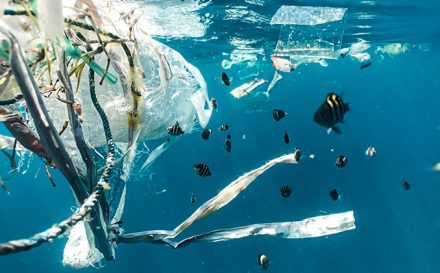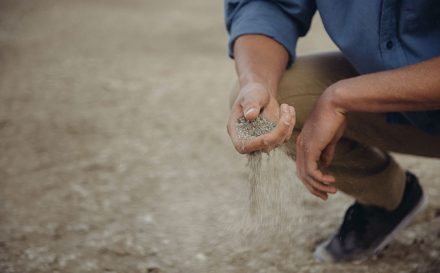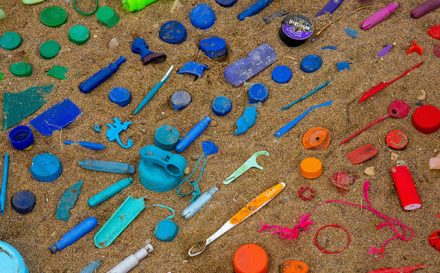Smart Key: The key characteristics of biodegradability The - Première Vision Paris - Denim Première Vision - Première Vision New York
Let’s unpack the secrets of sustainable fabrics through our Smart Keys. At the heart of eco-design issues, our Smart Keys series question all the available solutions to help you become more informed in your materials sourcing.Today, let’s discover the characteristics of biodegradability. It only takes a scroll through the websites of fashion labels or a scan of materials collections to see that one characteristic is increasingly mentioned: biodegradability. An important response to concerns about the mountain of waste generated by fashion, but what it is the current state of play? In general, the accent is placed on materials that are more solid and longer-lasting, so how can this be combined with the capacity to disappear swiftly into the environment? Clearly, biodegradable materials will not disintegrate in a few months inside a wardrobe. This capacity requires specific conditions that vary according to the material. All materials end up by biodegrading eventually, but some take six months while others take 200 years, meaning the spectrum is vast.
Natural textiles – obviously biodegradable?
Natural plant-based raw materials such as cotton, linen, hemp and silk, or animal products such as wool and hide, are known for having an intrinsic ability to biodegrade rapidly.
In the case of a finished textile or leather, however, the conclusion can be very different, and this is the first aspect to pay attention to when sourcing.
Treatments, coatings, membranes and added decorations can hinder biodegradability. Similarly, certain dyes may contain harmful components and release toxic emissions into the environment once the material has disintegrated. Therefore, the biodegradability must be guaranteed for the finished materials, and not only highlighted as a property of the raw fibre.
Biodegradable synthetics – a miracle solution?
This is of major importance, given that a synthetic material can take hundreds of years to disappear.
The tests and solutions developed since the 1980s were not very convincing. Materials become fragmentable but then persist for a long time as particles in the environment. But technologies have developed and it is now possible to develop materials that are completely biodegradable.
Read also: Smart Key: Recycling – can the fashion sector become self-sufficient in resources?
Biodegradable and bio-sourced are false friends.
Among the innovations seen in recent years, bio-sourced synthetics, polymerised from biomass such as corn, sugar cane or ricin are very popular.
Beware of amalgams
A synthetic product made from biopolymers, renewable natural resources, is not automatically biodegradable. Its components and its capacity for decomposition are two very different subjects.
Bio-sourced synthetics can have the same structures (PET, PA…) as their fossil fuel equivalents. So, while they reduce the use of fossil resources, their biodegradability needs to be verified.
Three factors for attention
A number of elements enter into play for a material to be biodegradable:
- The environment – Various parameters matter, such as the milieu (soil, sea water, fresh water), level of oxygen, pH, temperature, humidity and the micro-organisms activating the process.
- The structure and the properties of the material – The raw material, its construction and the various treatments it has received.
- The degree of decomposition and the time needed to obtain this disintegration. In order to be described as biodegradable, the standards require a minimum of 90% disintegration of the product within six months.
So, how can biodegradable materials be best used? The answer in 3 Smart Keys.
Smart Key #1: Develop products entirely made from biodegradable components.

In any effort to ensure the circularity of resources, the prerequisite is to design the garment or accessory with its end-of-life in mind from the outset.
A biodegradable textile or leather has obvious qualities. However, to facilitate the processing of the entire garment, its component zips, buttons, decorations and labels should biodegrade as well.
The challenge of dismantling products to extract the reusable materials has already been addressed in the recycling sector, but it would be best to tackle this issue at the root in order to avoid these problems, when we wish to develop biodegradable clothing and accessories.
Smart Key #2: Have the item tested and certified
A material is considered biodegradable when it can break down under the action of living organisms, without causing harm to the environment. It is a three-stage process:
- Fragmentation, where the material will transform into particles until it disintegrates.
- Degradation, the final stage of fragmentation, where the molecular mass is reduced.
- Assimilation and mineralisation, stages where micro-organisms integrate the residues of degradation to transform them into biomass, water and carbon.

Specific certification tests, such as OK Biodegradable Marine/Soil/Water, will analyse these stages, verify the time and the degree of biodegradability of the product, its non-toxicity and the absence of heavy metals.
Smart Key #3 : Don’t over-produce

Once again, common sense reminds us that a solution is only viable if it does not generate a negative countereffect. Over-production of materials, even biodegradable ones, also means having to then process an overabundance of them at the end of their life cycle.
Most biodegradable synthetics, at the moment, are only able to decompose under specific accelerated transformation atmospheres and also require the creation of sectors to collect and process the products.
In France, to avoid generating confusion and the belief that a biodegradable product can be abandoned anywhere outdoors, this term has been banned from finished goods since January 2022.
While the promise of these technologies is significant, they only provide a solution to facilitating waste processing and do not miraculously reduce the volume of pollution generated by the fashion industry. Biodegradability will be a tool for ensuring the non-toxicity and reduced impact of a product, but should not be an objective in its own right.
Sources:
- Revue des normes sur la biodégradabilité des plastiques, Ademe, 2020
- Pollution plastique – une bombe à retardement, Rapport au nom de l’office parlementaire d’évaluation des choix scientifiques et technologiques, Philippe Bollo et Angèle Préville, 2020
- Fiche technique, les polymères biodégradables – Pôle Écoconception
- Article 13 loi AGEC
Learn more about sustainability with our Smart Keys series:
- The hidden face of cotton
- Cellulosic materials
- The mysteries of chemistry
- Traceability
- Alternative plant-based materials
- Ecological and ethical accessories
- Polyester recycling
- The secrets of sports technical fabrics
- Eco-packaging
